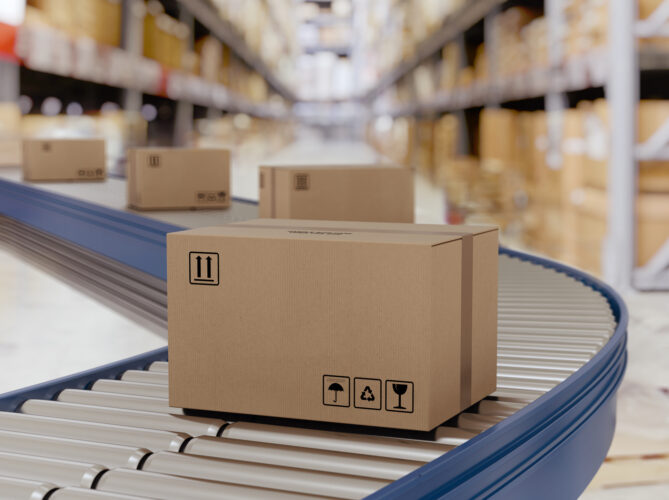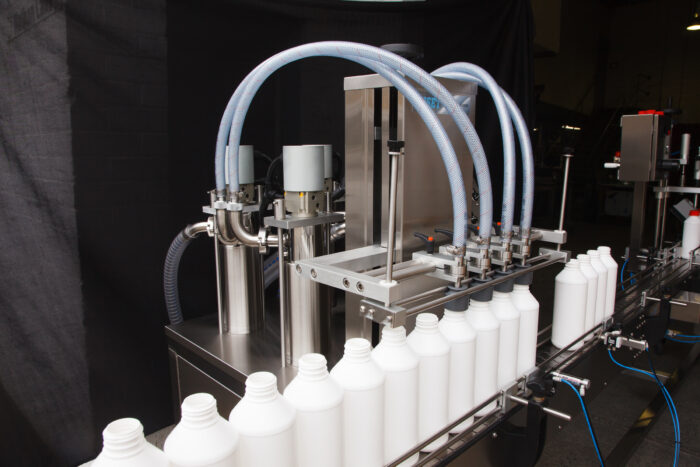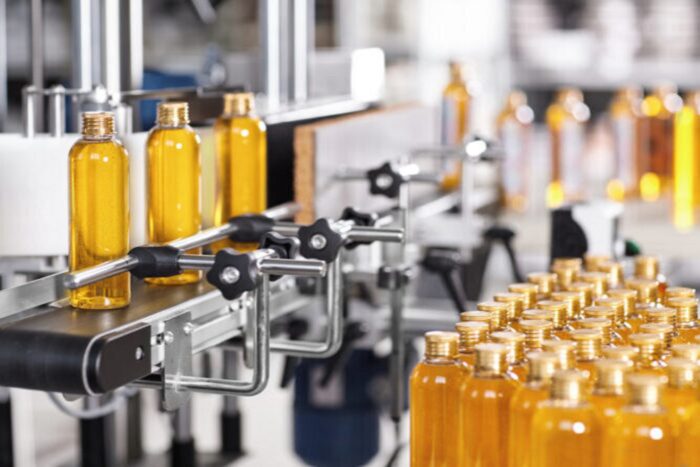Conveyor belts help move products and raw materials around a facility and between processing and packaging machines. They are ubiquitous around the world, improving productivity and worker safety by reducing inefficient manual handling.
In the food processing industry, conveyor belts are used to transport ingredients and finished products. Pharmaceutical manufacturers rely on conveyor systems for a similar purpose with different packaging requirements.
In some factories, both the manufacturing of materials and transportation may take place at once by using conveyors to move raw materials from one location in the facility to another before they are ready.
What is a conveyor belt and how does it work?
In simple terms, a conveyor is a mechanical device used in many industries to move goods or products from one location to another. These systems are extremely helpful for businesses dealing with heavy and dangerous items, raw materials, or delicate products. From huge chemical drums to tiny pharmaceutical vials, conveyors are integral to modern manufacturing and production lines.
While there are many types of conveyors, most use electric motors or engines to power the belts, rollers, or slats that carry the product. Most of us are familiar with conveyors that provide a flat surface to transport goods, but some conveyor systems can even be overhead or use side belts to move the product.

What industries use conveyors?
The primary function of roller, slat, and belt type conveyors is carrying products and transporting them around a plant more quickly and efficiently. This saves time as well as money because it reduces the amount of inefficient manual labour needed.
Because conveyors are so useful, a range of industries embraced the technology, including:
- Pharmaceutical
- Cosmetics
- Food and drink filling
- Manufacturing
- Packing
- Logistics and distribution
- Agriculture
- Mining
- Recycling
- Plastic making
These industries use conveyors in a wide range of types, shapes, and sizes because of the undoubted benefits, which is why the market for conveyors worldwide is growing rapidly.
The benefits of using a conveyor in your manufacturing process
Conveyors bring a number of benefits to a manufacturing and production plant. Firstly, and most importantly, is that these systems are more efficient than manual handling. They increase efficiency and productivity, especially for large plants or facilities where goods are moved across multiple levels.
Not only do they lower labour costs but also, just as importantly, they promote safety. Conveyors reduce the chance of workers suffering strain injuries or accidents from carrying heavy, fragile, and dangerous products.
Another advantage is that conveyor systems have a small footprint, which means a company will not have to upgrade to bigger premises. This is especially useful for companies where production demands change because you can simply speed up the conveyors to match production.
When used with accumulation and unscrambling tables, conveyors are particularly useful for automatic liquid filling processes, where they feed containers consistently into filling machines and collect them for packing.
Conveyor types
While there are many kinds of conveyors, three important conveyors types seen in manufacturing are:
- Belt/mesh conveyors
- Slat conveyor
- Roller conveyor
While there are other types, such as chain, vibratory, and skate wheel conveyors, these tend to be more specialised. Belts, slats, and rollers are used widely across many businesses of all sizes.
Belt conveyor
Belt conveyors are one of the simplest types of conveyors, consisting of a rubber or polymer belt stretched around rollers to move the product. Most of us encounter these at supermarket checkouts, where they move shopping ready to be scanned.

They are also popular in mail sorting centres and warehouses for lighter goods, transporting packages quickly from one point to another. While relatively cheap and easy to install, they can be damaged by sharp and heavy products. For that reason, slats and rollers are other options in manufacturing and processing plants.
Slat conveyor
Using a similar principle to the belt conveyor, slat conveyors are particularly popular in the food and drink industries. Slat conveyors generally use two parallel chain drives to move spaced slats made of stainless steel, PVC, plastic polymer, or aluminium.
The main advantages of slat conveyors are that they are robust, easy to clean, and can cope with sharp, heavy products. They are relatively easy to configure, able to work around corners or angles and match well with accumulation and unscrambling tables.

Their ability to follow complex curved routes makes them popular in bottling plants, and they are robust and easy to clean and maintain. Even if a slat is damaged, it is easy to replace rather than taking off the entire belt.
Roller conveyor
Roller conveyors use a system of rollers to shuffle the product along, either manually, under the force of gravity or using powered rollers. They are used extensively by many industries because they transport products quickly around the production facility, and are relatively easy to maintain.

The main advantage is that they are robust and able to move large items like pallets, and can accumulate goods ready for picking. They are also a good option for conveyor layouts needing curves.
Other conveyors
Mesh conveyors fall between the slat and belt types, using a plastic or stainless steel mesh driven by sprockets. They are easy to clean, suitable for heavy loads and durable, although they are not as flexible in layout and use as slatted conveyors.
Overhead conveyors grip the product from above and move it down the line. They often run above a belt or slat system and press down lids, for example. Side grip conveyors use parallel belts on either side to move products and are particularly common in bottling plants.
How to find and install conveyors
Naturally, upgrading a production line is rarely a matter of buying a conveyor system off the shelf and installing it, ready to go. A business needs to know which type is best, the layout, and the speed. This is where consulting with experts with experience across many industries, such as Asset Packaging Machines, can help.

We can help you work out how to integrate conveyors into your existing production processes and maximise the efficient use of floor space. If you use filling machines and accumulation and unscrambling tables or need conveyors to operate around corners, we’ll help you find the optimal solution.
Flexible solutions
Conveyor solutions may need complex solutions such as S-bends, right angles, and parallel filling lines. An updated system can fit into your existing conveyor layout and integrate fully with transfer tables, filling machines, and capping machines.
For some businesses, portable conveyors allow more flexibility, and you can move them to where they are needed. The ability to move the machines makes it easy to try out different floor plans and layouts that will work best for your production volume needs.
Conclusion
For many manufacturing companies, conveyors are the perfect tool for safely transporting materials from one area to another, and between different levels. With advanced safety features that prevent accidents, while also increasing the throughput of the system, they are an ideal transportation solution.
Asset Packaging Machines manufactures conveyor systems to a very high standard, using stainless steel, aluminium, and other high-quality materials and components. These machines, made in Australia, are durable and last for years without complaint.
Easy to maintain and with support always close, they are the perfect choice for a manufacturing or production business. Contact our conveyor machine specialists for more details of how conveyors can help your business thrive.











